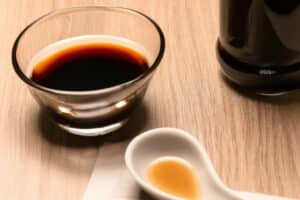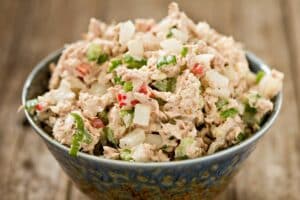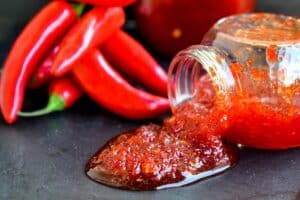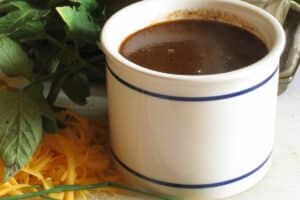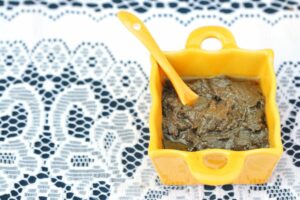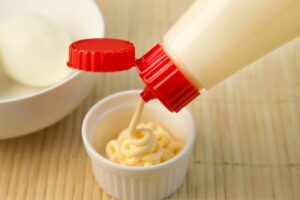You’ve probably been eating butter for as long as you can remember, whether you use it for cooking eggs, baking potatoes, over popcorn, or just on toast.
Despite its widespread use, butter can be unhealthy if it’s not consumed moderately. As you can guess, it’s high in fat, especially saturated fat (63%) — the fat known to raise bad cholesterol levels in your body.
If you want to replace butter with healthier, low-calorie alternatives, we have you covered. But before we share our recommended low-fat butter substitutes, let’s see exactly how much fat there is in butter.
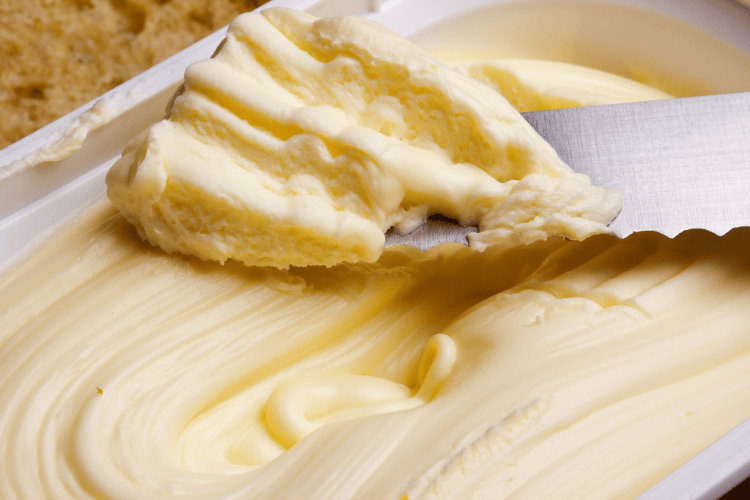
How Much Fat Is in Butter & Why You Should Avoid It?
One tablespoon of butter contains 11.5g of fat: 63% saturated fat, 26% monounsaturated fat, and 4% polyunsaturated fat.
Although recent studies revealed there’s no relationship between saturated fat intake and a higher risk of death from heart disease, it almost surely increases “bad” LDL cholesterol in your body.
Butter also has a high-calorie content (104 calories per tbsp), which may result in weight gain if consumed in large quantities.
That’s why it’s recommended that you use it sparingly or stay away from it — you can accomplish that by switching to one of our substitutes.
Low Calorie Butter Alternatives: Less Fat & Rich in Taste
- Coconut oil
- Avocado
- Applesauce
- Dairy-free yogurt
- Nut butter
- Pumpkin puree
- Olive oil
- Ghee
Saturated Fat Content in Each Butter Substitute
| Butter Substitute | Saturated Fat Content |
|---|---|
| 1 tbsp coconut oil | 55% |
| 1 tbsp avocado | 1% |
| 1 tbsp applesauce | 0% |
| 1 serving dairy-free yogurt | 1% |
| 1 tbsp nut butter | 3 — 8% |
| 1 cup pumpkin puree | 2% |
| 1 tbsp mashed bananas | 0% |
| 1 tbsp olive oil | 10% |
| 1 tbsp ghee | 40% |
1. Coconut oil
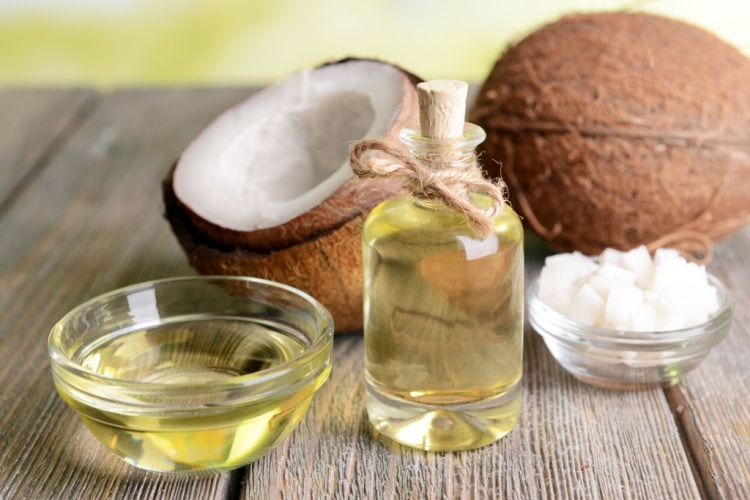
Coconut oil is mainly used as a replacement for butter for frying or baking. It behaves pretty similar to butter — it turns into a liquid when hot and has a solid form at room temperature.
Coconut oil contains healthy saturated fats. One minor downside is that it does taste like coconut. If you want to avoid that, try refined coconut oil, which has a milder taste.
Looking to buy coconut oil? You can get coconut oil in your local grocery store.
2. Avocado
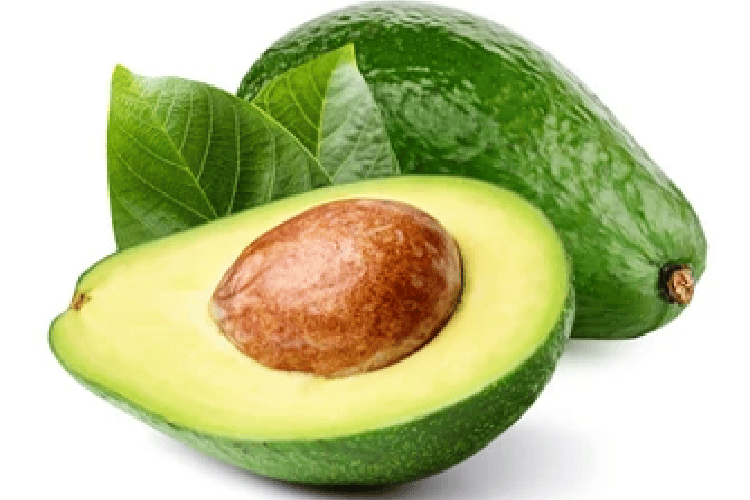
The number two on our list is mainly used as a spread, but many baking recipes feature avocado as an alternative to butter.
Avocado makes an incredible spread on toast with some eggs, tomatoes, and red pepper flakes. As for baking, avocado is mainly used with darker ingredients, like cocoa powder or chocolate, to cover up its greenness.
Avocados are very healthy. Oleic acid, which makes up the bulk of the fat in avocados, has been linked to decreased inflammation.
3. Applesauce
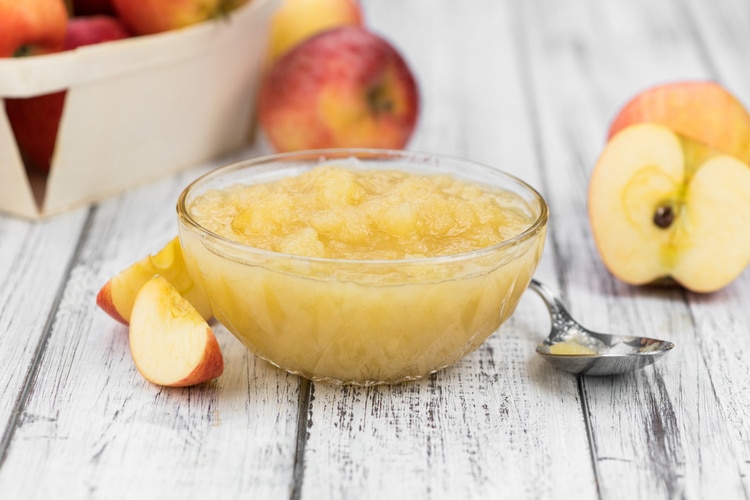
Applesauce is mostly used as a butter substitute for baking, but you can also use it as a spread. It’s sweeter and less calorie-dense than butter.
People like to put it on their toast and sprinkle cinnamon on top. You can also put it on top of your oatmeal or Chia pudding.
Applesauce is a great source of fiber and vitamin C. That being said, if you’re looking for a healthier alternative, check the sugar content of the brand you want to buy — the lower, the better.
4. Dairy-free Yogurt
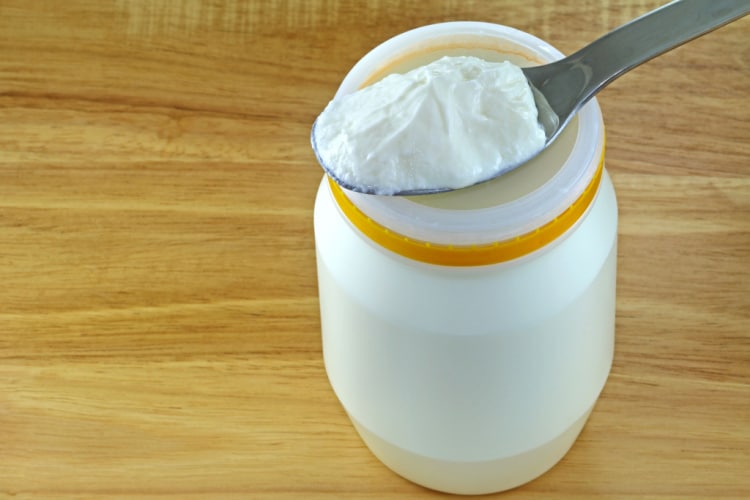
Dairy-free yogurt is a great vegan alternative to butter. You can use unsweetened coconut and almond yogurt when baking, two options that are also wonderful for breakfast spreads.
While greek yogurt is not dairy-free, you can also use it if you are not vegan. This is a great option if you are looking to strengthen your bones or if you want more probiotics in your diet. It’s rich in calcium, vitamin D, and protein.
5. Nut butter
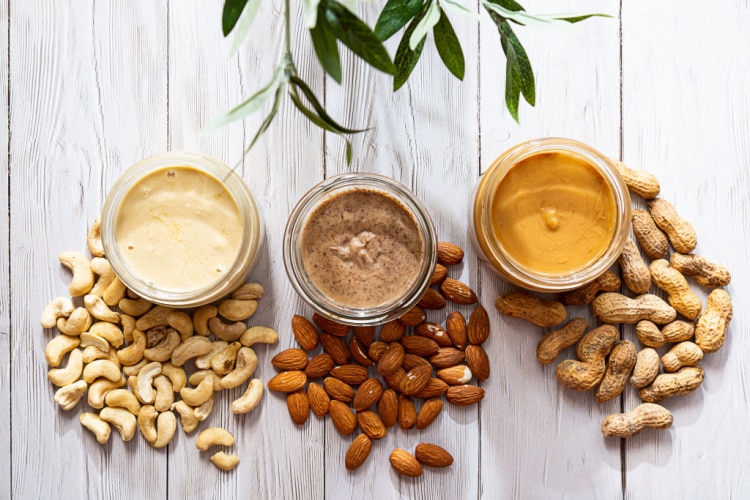
You can use any different type of nut butter — peanut, almond, sunflower — as an alternative to butter. It’s really up to your personal preference.
Nut butter is great for making toast or baking raw veggies. It can increase the density of baked goods and might change the flavor a bit.
Nut butter is also a good source of nutrients. For example, almond butter contains vitamin E, iron, magnesium, heart-healthy fats, potassium, and fiber.
All varieties of nut butter are calorically dense, so just stay mindful of how much you use for portion control.
6. Pumpkin Puree & Mashed Bananas
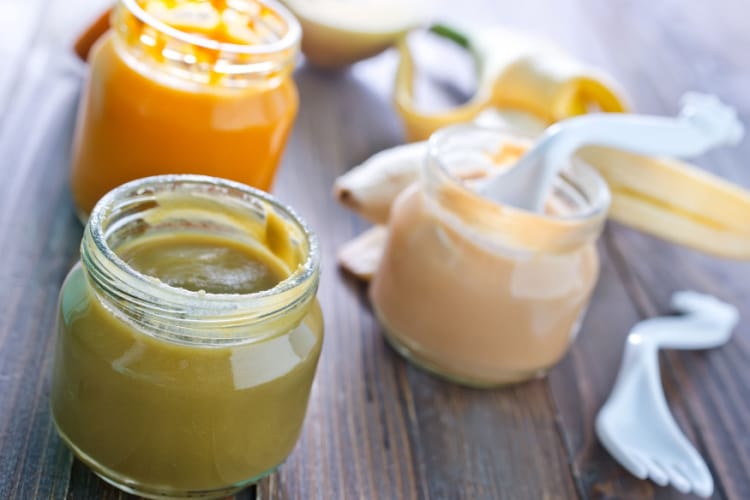
The great thing about pumpkin is that it’s delicious. The not-so-great thing about it is that it can be a little watery compared to butter. It’s best to substitute ¾ cup of pumpkin puree for every cup of butter if you decide to go with this option.
Mashed bananas are very similar to pumpkin puree, except they might be slightly sweeter. You can use them as an alternative to butter in sweeter recipes, like muffins, cookies, and cakes in the same ratio as butter.
7. Olive Oil
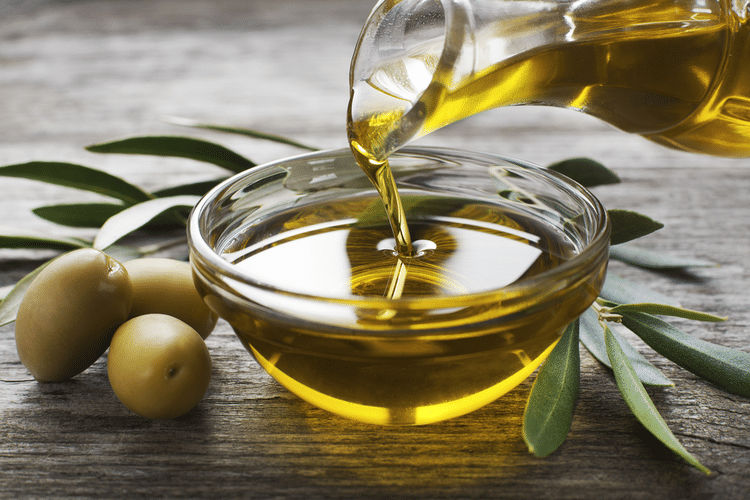
Olive oil contains healthy monounsaturated fats, which are better for you than the saturated fat in butter.
According to several studies, regularly consuming olive oil may lower the risk of cardiovascular disease by lowering cholesterol and improving blood sugar control.
You may use olive oil as an alternative to butter for sautéing veggies and meat. You can also use it to make pancakes. However, use slightly less olive oil than butter. In place of 1 cup of butter, you can use 3/4 cup olive oil.
8. Ghee
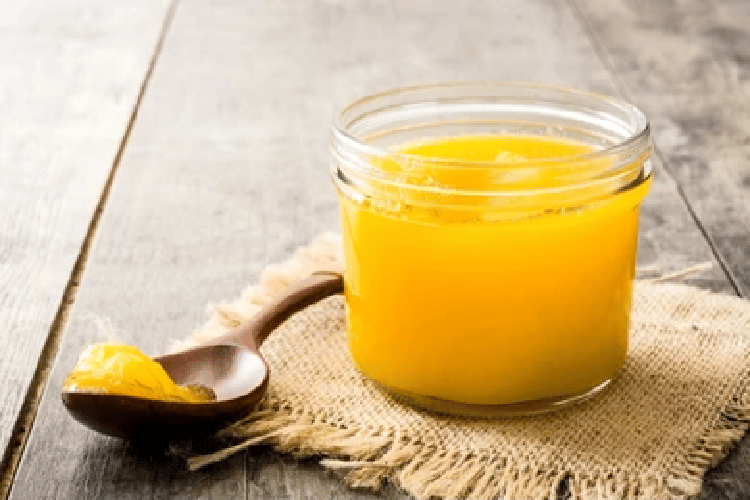
Clarified butter, or ghee, is renowned for its nutty, creamy flavor.
Ghee has very little casein or lactose, making it a preferable option for those who are lactose intolerant or allergic to milk.
However, it contains saturated fats and should be used in moderation.
Ghee works best as a butter substitute for bread and cookies. But because ghee has a higher moisture content than butter, you might need to adjust the proportions of liquid and flour in your recipes. Ghee substitutes butter in a 1:1 ratio in baked goods.
Looking to buy ghee? Check the baking aisle of your local grocery store.
Is Margarine a Low-Fat Substitute for Butter?
Both butter and margarine are used in cooking, baking, and as spreads. Margarine is not regarded as a low-fat substitute for butter because they have the same amount of total fat.
Margarine was created in the late 1800s to replace butter. Its main component is vegetable oil, which is combined with emulsifiers, colorants, and other artificial substances. 1 tablespoon of margarine has 11 g of total fat, the same as butter, and is thus not low in fat.
Additionally, trans fat was once prevalent in margarine and later connected to heart disease. Nonetheless, except for a few stick variations, almost all tub margarine variants are now trans-fat-free.
Low-Calorie Butter Substitutes for Toast
Considering that 1 tablespoon of butter has 104 calories, why not try a lower-calorie option? Here are some of the best, healthiest substitutes for butter on toasted bread.
- Pesto — 1 tbsp = 70 cal
- Peanut butter — 1 tbsp = 95 cal
- Mint chutney — 1 tbsp = 7 cal
- Almond butter — 1 tbsp = 88 cal
- Tomato chutney — 1 tbsp = 8 cal
- Guacamole — 1 tbsp = 19 cal
- Hung curd — 1 tbsp = 19 cal
- Garlic chutney — 1 tbsp = 16 cal
- Hummus — 1 tbsp = 25 cal
- Low-fat cheese — 1 tbsp = 48 cal
Oil & Fat-Free Vegan Butter Recipe
Are you up for some creamy, sweet, vegan butter? This is a plant-based whole food recipe that’s free of fat. Plus, you can make it without salt.
Ingredients:
- 3 cups of canned, frozen, or sweet corn
- 1 tbsp of lemon juice
- ¾ tsp salt (optional)
- A pinch of garlic powder
- 1 tbsp water
- A couple of drops of butter-flavored extract (optional)
In a blender, add 3 cups of corn and 1 tablespoon of squeezed lemon juice. Skip the salt if you want to make salt-free butter. The same goes for butter-flavored extract, don’t include it if you want mild-flavored butter. Add a pinch of garlic powder and 1 tbsp of water to thin the consistency a bit.
Let the blender puree the ingredients for about six minutes. Pause every two minutes and scrape the blades. Add an extra 1 tsp of garlic powder and more salt for a more garlicky result.
Turn the stove to medium-high and place the pan with butter to heat. Stir while the mixture bubbles and boils. Keep scraping down the sides and stirring.
Once it reaches the desired thickness, set the butter aside to cool down a bit. The longer it cools down, the thicker it gets. Once ready, store it in containers and chill overnight in the refrigerator.
Conclusion
We hope you enjoyed our no fat butter substitute recommendations. While no butter substitute tastes exactly like butter, that doesn’t mean your dishes won’t be delicious.
The three alternatives that most closely resemble ordinary butter in texture are ghee, nut butter, and coconut oil. The ones with extra vitamins, minerals, fiber, and other nutrients are mashed banana, pumpkin purée, and avocado. Olive oil is excellent for baking vegetables, while dairy-free yogurt is fantastic for sweets.
Don’t know what to spread on bread if not butter? Pesto, hummus, peanut butter, or low-fat cheese are all great alternatives to butter. Toasts go well with apple sauce, especially when combined with cinnamon.
If you absolutely cannot live without butter and store-bought vegan alternatives do not suit your taste buds, why not make your own vegan butter? We hope you’ll enjoy our oil-free and fat-free vegan butter recipe.

